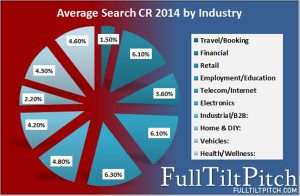
2016 is fast approaching and it’s time to compile the SEO trends set to rule search marketing next year.
Various changes have affected search in 2015, and as marketing managers and SEO agencies review the impact the previous year of work has had on the performance of their rankings, they must already draw conclusions to optimise for the Christmas sales season. So which SEO trends can online businesses expect to see in 2016?
1) PAGE TAGGING
In 2015, mobile surpassed desktop for online search use for the first time in history.
2016 will see this rise further and result in heading tags being rolled out a far greater rate, and potentially more frequently, than we do now.
Offering structure to mobile users results in a need for different devices and browsers to load pages differently. Uniforming structure all the way down to H5 tags will aid in this happening with ease.
2) CONVERSION RATE OPTIMISATION (CRO)
Conversion Rate Optimisation (CRO) has been a buzzword in 2015 – if the users are there but not converting, conversion rate optimisation is ‘carried out’.
Of course conversions are measured differently from one website to another, but in 2015 the use of conversion rate optimisation will become more sophisticated: web managers will take greater advantage of web tracking and event tracking in Google Analytics to understand how to get users to convert quicker, with a shorter attention span. The use of CRO is also likely to increase the number of different conversion types and different stages along the sales process.
3) APP STORE OPTIMISATION (ASO)
The rise of mobile has resulted in a greater number of companies producing apps, hence creating a need for app store optimisation (ASO) in order to compete against each other. Also needed are more technical deep-linking aspects of app management, whereby app pages will show in search results.
Mobile users are increasingly using device search tools like Siri as opposed to search engines, in order to ‘cut to the chase’ and get to the information quicker. Businesses looking to capture mobile users need to develop and market apps accordingly to take prospects straight to their official apps – skipping a visit to the website.
4) LOCAL AND VOCAL SEARCH
Local search is getting more targeted and as such businesses need to be more vocal in what they are doing. Google Places/Businesses now only shows three results instead of seven in the first instance, but a click through reveals a list of around 20 results.
Local businesses or large scale companies with local depots or shops should put schema tagging and local listings as a top priority to capture a local market which will be receiving increasingly relevant results in 2016.
5) DIFFERENT PHASES OF SEO (RESEARCH AND BUYING)
In 2016 SEO will come with a number of different phases and companies will need to construct SEO as such.
This new way of creating SEO strategies includes building distinctive campaigns for the different steps within the user journey: for example, customers at the start of the user journey and the ones ready to buy may be targeted through separate sets of keywords. Targeted SEO campaigns per user will take into account different habits attributed to site use and conversion understanding.
6) MICRO-MOMENTS AND THE FRACTURED USER JOURNEY
The different phases in online conversions, combined with the rise of mobile search, app use, and the evolution of local search, will all feed into user journeys becoming increasingly fractured, cross-device and harder to track (the ‘always online’ state making it even more difficult). Periods of quick searches and online browsing intervals during the user journey were called Micro-Moments by Google in 2015, and businesses must be present in all steps along the way.
Tracking events and using goals on various devices, and measuring protocol overview will be needed in 2016 to stitch a full user journey together.
7) REAL TIME PANDA UPDATES
Next year will see Real Time Panda Algorithm Updates in full swing. It is suggested the algorithm will be updated and rolled out by the end of 2015, so 2016 will be the year SEO agencies and web managers really start to use the update to their advantage where needed.
8) GOOGLE’S WAR ON CONTENT ALGORITHMS
Robotic articles – ‘You will not believe what happens…’ – written by computers scraping content from various sources and put into related content sections of websites will be targeted in 2016.
Overall these are less likely to rank and we could potentially see a big penalty for a few large scale content pushers – Facebook feeds may never be the same again!
9) GOOGLE KNOWLEDGE GRAPH GROWTH AND TRAFFIC DROP
Google is increasing the amount of information it is putting on its search results pages, in some cases reducing the need for users to even click on a website. This can be seen on local listings, cinema times, hotels and reviews, tourist attractions and most recently film reviews from industry critics.
Although handy for a user, it poses a few questions for websites striving for online space.
Magazines in particular have some work to do, as they’ve been forced online and can now potentially be forced back off it.
Tagging a website for the knowledge graph can be essential for such websites to survive online.
10) THE RISE OF INTERACTIVE CONTENT
Content has been king for a few years, but it seems interactive content will look to steal the crown in 2016.
Infographics, already hugely popular as a selling point, have never really taken off among users, but interactive content, similar (but more advanced) to online quizzes, does encourage user engagement and interaction with a brand.
2016 is likely to see this grow further with mobile and app use, as the smartphone is the perfect tool for user interaction.
Originally published on the Polaris blog.
Digital & Social Articles on Business 2 Community(48)









